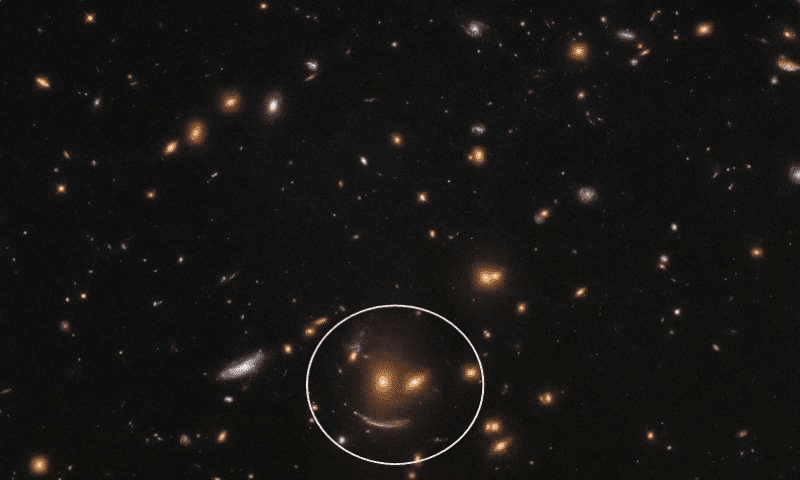
Outer space can be an intimidating and downright frightening thing to contemplate, which is why it helps to encounter a friendly face once in a while. In a new image captured by NASA’s Hubble Space Telescope, the elements of a galaxy cluster called SDSS J0952+3434 have aligned in such a way as to draw a smiley face many light-years across.
The ‘eyes’ of the smiley face are comprised of two yellow-hued blobs which hang atop a sweeping arc of light. The arc-shaped object is actually a galaxy whose shape has been distorted because its light passed near a massive object en route to Earth. This effect is known as gravitational lensing and requires that the three participants (the light source, the massive structure, and the observer — which is on Earth) be aligned in a straight-line configuration called a syzygy.
According to general relativity, light follows the curvature of spacetime. Consequently, when light passes around a massive object, it bends. This means that the light from an object on the other side will bend towards an observer’s eye, as it does through an ordinary lens. But unlike an optical lens, a gravitational lens has no single focal point, but a focal line. Scientists have been exploiting gravitational lensing — which is actually quite a common astronomical technique nowadays — in order to image distant cosmic objects that would have otherwise appeared as faint dots to our instruments.
Hubble stumbled across the friendly-looking galactic shape while it was searching for new stellar nurseries to study. Stars are born out of giant clouds of gas which eventually grow unstable, collapsing under gravity. Hubble’s Wide Field Camera 3 (WFC3) allows astronomers to analyze the luminosity, size, and formation rate of different stellar nurseries, which will one day allow them to understand the formation of new stars in finer detail than before. It’s important to study stellar formation within different galaxies to gain a richer context, which is why Hubble had its gaze fixed on a galaxy cluster.
Was this helpful?



